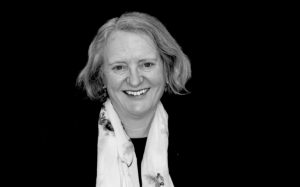CONNECTED speaks to Professor Flora Samuel about how new research will capture the positive aspects of neighbourhoods during lockdown, and help planners design resilient homes and neighbourhoods for a greener future.
 When lockdown struck a few months ago and homes became offices, schools and gyms, many found it hard to cope with the lack of green space and sometimes even natural light in these new conditions. For many, the impact of the design of housing and neighbourhoods has never been felt so strongly as it has during lockdown, particularly for vulnerable individuals who have been unable to leave their homes.
When lockdown struck a few months ago and homes became offices, schools and gyms, many found it hard to cope with the lack of green space and sometimes even natural light in these new conditions. For many, the impact of the design of housing and neighbourhoods has never been felt so strongly as it has during lockdown, particularly for vulnerable individuals who have been unable to leave their homes.
Professor Samuel from Reading’s School of Architecture explains how the function of homes and neighbourhoods has changed in the last few months, and what research is being undertaken to make them more resilient for the future.
An unequal lockdown
Reflecting on the past few months, Professor Samuel said:
“Homes have had to adapt radically to accommodate home working, schooling and exercise regimes while hopefully offering a positive environment to support health and wellbeing by providing access to natural light and green open space.
“In functional neighbourhoods, networks have developed – often online – to help the ill, frail and elderly. Deliveries of food from local shops and farms have reawakened an awareness of the ‘local’ and keeping fit has been easy in a network of local parks and safe streets. All of this, consolidated by the weekly presence of neighbours on their doorsteps clapping in support of the NHS, has built a new sense of community.
“But for many in less fortunate situations, poor community links and little access to safe outside spaces has been the overriding experience. And for many living in flats that have been converted from offices, the situation has been particularly bad. Many of these spaces lack natural light and are inappropriate for human habitation [Park, 2019].
“Unhealthy and poor-quality housing, financial worries, isolation and loneliness have exacerbated inequalities and impacted on mental and physical health. And whilst there has been evidence of a reduction in pollution caused by reduced transport activity, recycling and garden waste are now in many cases being sent to landfill.”
The question now is: how can we build on the positives to ensure future housing provides more functional neighbourhoods?
Improving housing designs
As part of a series of projects coordinated by the UK Collaborative Centre for Housing Evidence (CaCHE), Professor Samuel and a number of her colleagues are carrying out a research project that focuses on the role of housing and neighbourhood design in resilience.
She explains: “A range of organisations are currently undertaking research into the impact of homes and places on issues relating to their social value – the way in which design can facilitate connections between people, encourage active lifestyles and foster positive emotions, for example, through contact with nature.
“We will be collecting positive stories of change during lockdown and finding ways to capture the elements that will support better planning design and delivery for new houses and homes.”
A green recovery
As part of the project, Professor Samuel will be interviewing policy makers, local authorities, third sector organisations and people who can influence home design in the future, speaking to them about the impact of the pandemic in their areas. The project will also gather evidence from other ongoing research projects which are exploring the impact of homes on people, home working and productivity.
The aim of the project is to show how we can design homes and neighbourhoods better in the future, so they can be both green and resilient to any new challenges.
Professor Samuel said:
“The report we produce will present options for how we can do things better in the future. This will support a green recovery, allowing us to develop neighbourhoods that are resilient, sustainable and great places to live.”
Find out more about Professor Samuel’s research.
This article was first published in The University of Reading Connecting Research Blog on 28 July 2020.





